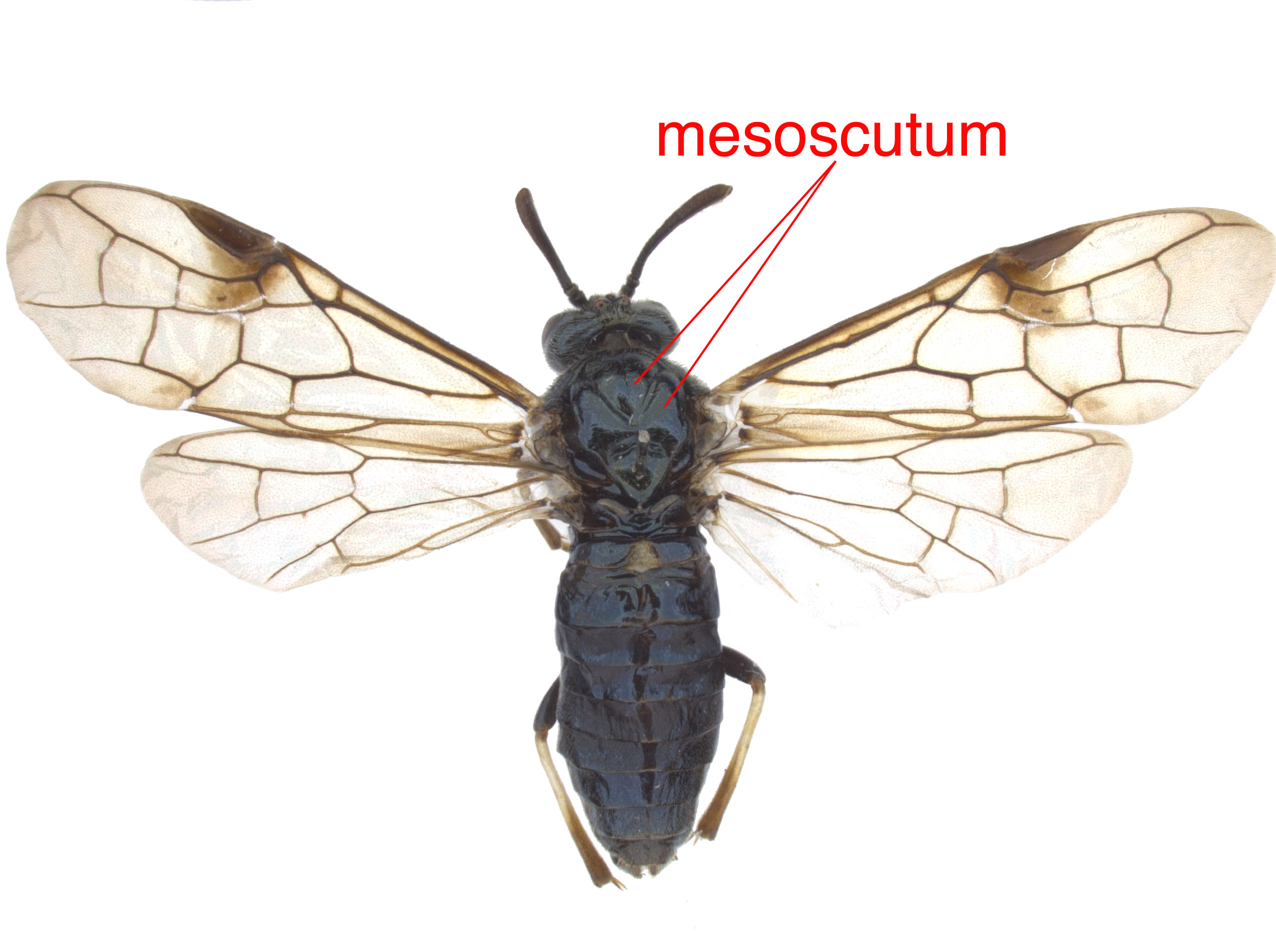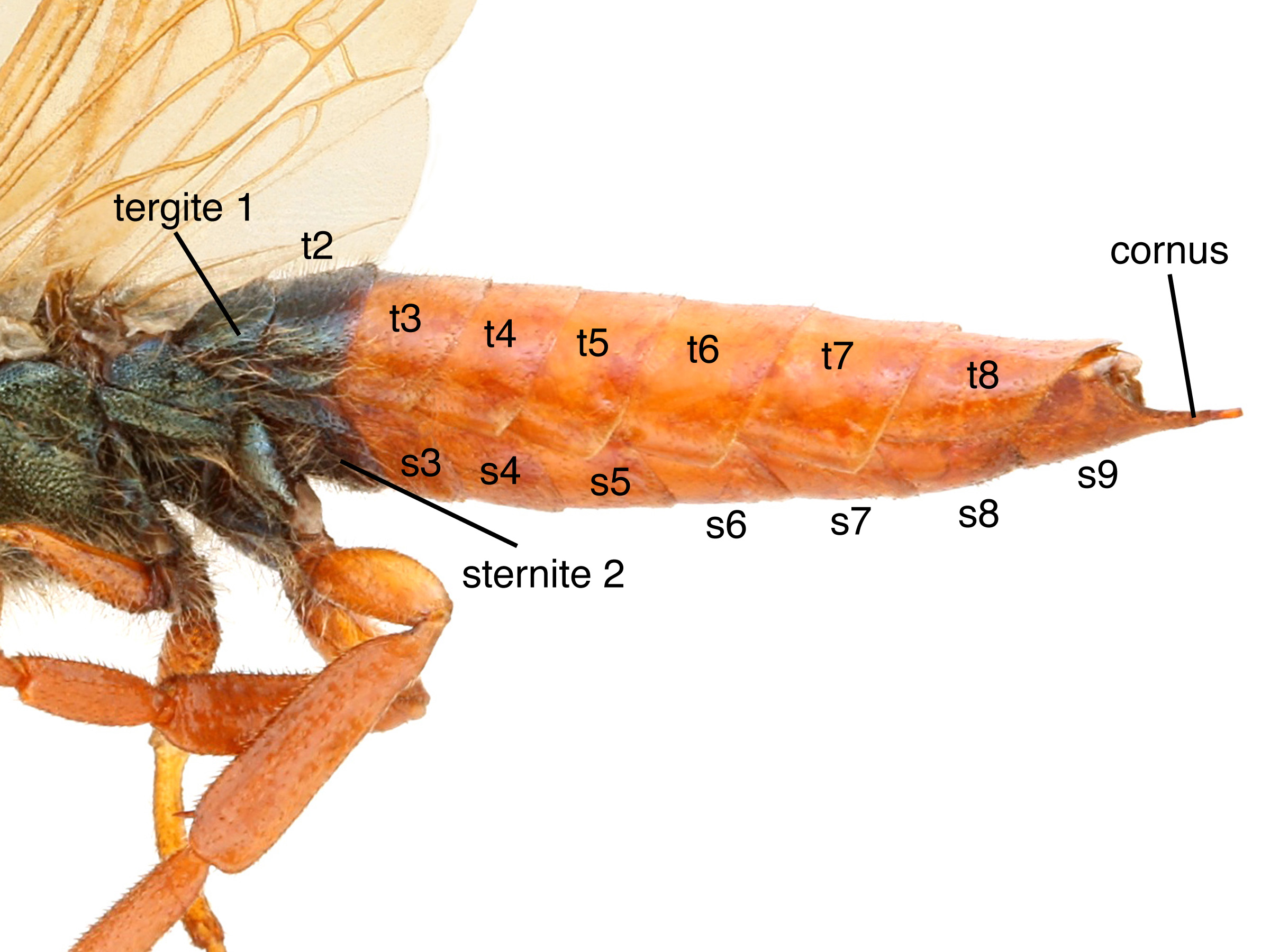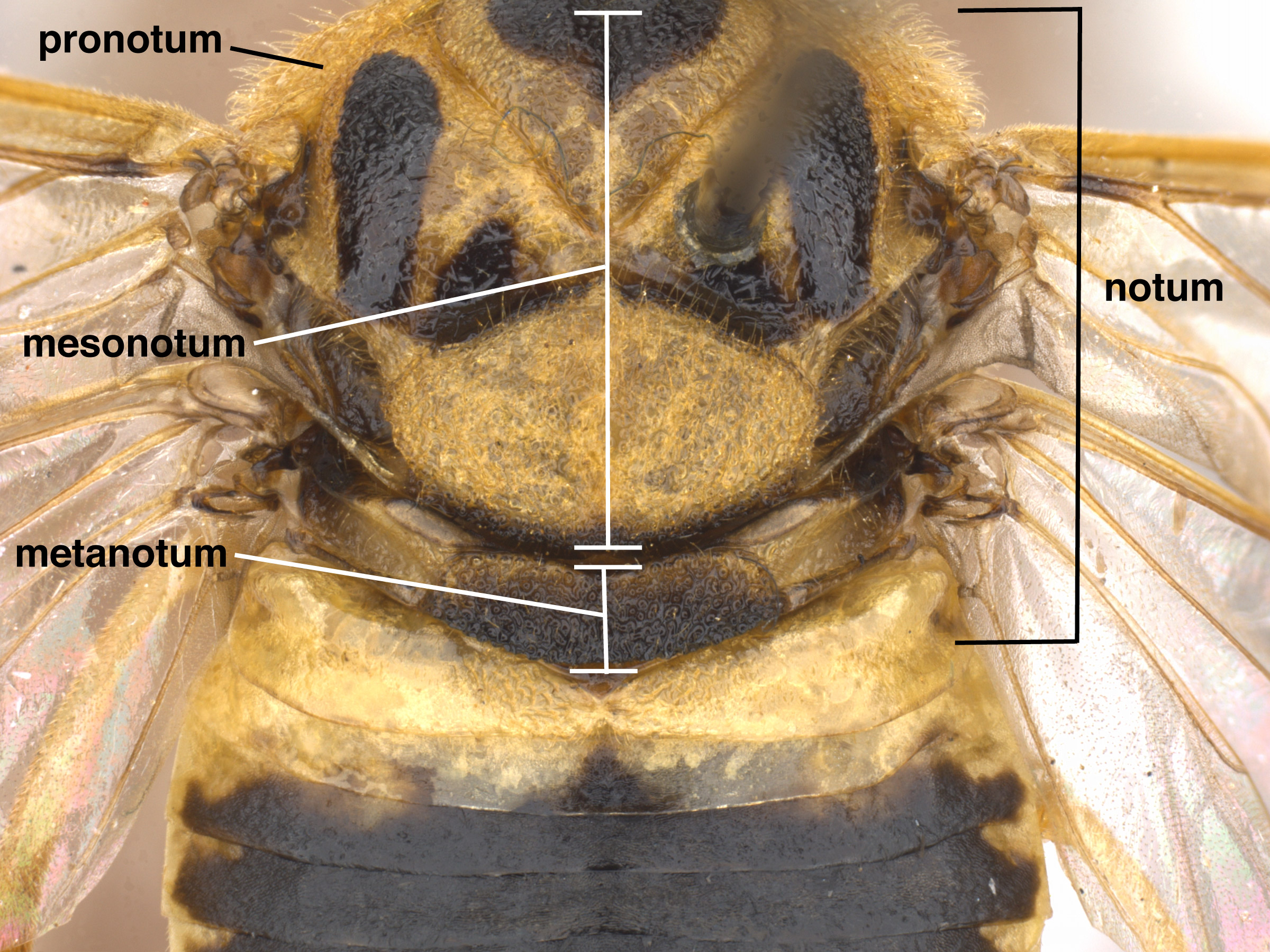Family: Tenthredinidae
Family common name: common sawflies
Subfamily: Heterarthrinae
Tribe: Fenusini
Genus: Profenusa MacGillivray, 1914
Subgenera: none
The Tenthredinidae are the most species-rich family and are found throughout the world, in all continents but Antarctica. They are known as the “common sawflies.” They can generally be recognized by a cylindrical body and long, segmented antennaeantenna:
the sensory organ emerging from the front of the head, usually between the compound eyes and above the clypeus; includes the flagellum, scape and pedicel
 . Otherwise, they come in a variety of colors, sizes, and forms (Goulet 1992Goulet 1992:
. Otherwise, they come in a variety of colors, sizes, and forms (Goulet 1992Goulet 1992:
Goulet H. 1992. The genera and subgenera of the sawflies of Canada and Alaska: Hymenoptera. Symphyta. The insects and arachnids of Canada. Part 20. Agriculture Canada Publication.).
Sawflies in the Heterarthrinae subfamily are generally small and dark-colored. Many species of this family are economic pests of trees and shrubs and can be characterized by their skeletonizing or leaf-mining larval feeding behaviors. Heterarthrinae adults can be distinguished from those of other subfamilies by wing venationvenation:
the network of veins on a wing
(Smith 1971aSmith 1971a:
Smith DR. 1971a. Nearctic Sawflies. III. Heterarthrinae: Adults and larvae (Hymenoptera: Tenthredinidae). Technical Bulletin, U.S. Department of Agriculture 1420: 1-84.).
Profenusa are generally small, about 4 mm in length, and mostly black with whitish, yellow, or black legs (Smith 1971aSmith 1971a:
Smith DR. 1971a. Nearctic Sawflies. III. Heterarthrinae: Adults and larvae (Hymenoptera: Tenthredinidae). Technical Bulletin, U.S. Department of Agriculture 1420: 1-84.). The Fenusini tribe are all leaf miners (Goulet 1992Goulet 1992:
Goulet H. 1992. The genera and subgenera of the sawflies of Canada and Alaska: Hymenoptera. Symphyta. The insects and arachnids of Canada. Part 20. Agriculture Canada Publication.).
There are 14 described extantextant:
in existence; opposite of extinct
species worldwide. Five species occur in North America (Taeger et al. 2010Taeger et al. 2010:
Taeger A, Blank SM, and Liston AD. 2010. World Catalog of Symphyta (Hymenoptera). Zootaxa 2580: 1-1064.).
A key to NearcticNearctic:
describing the region of the Northern Hemisphere that includes North America south through northern Mexico
 species is included in Smith 1971aSmith 1971a:
species is included in Smith 1971aSmith 1971a:
Smith DR. 1971a. Nearctic Sawflies. III. Heterarthrinae: Adults and larvae (Hymenoptera: Tenthredinidae). Technical Bulletin, U.S. Department of Agriculture 1420: 1-84..
Subfamily characters
 M slightly constricted at apexapex:
M slightly constricted at apexapex: vein 2r present (Goulet 1992Goulet 1992:
vein 2r present (Goulet 1992Goulet 1992:Genus characters
 veins 2A and 3A incomplete, not curved upwards at apexapex:
veins 2A and 3A incomplete, not curved upwards at apexapex: cellcell:
cellcell: R1 open to margin (Smith 1967cSmith 1967c:
R1 open to margin (Smith 1967cSmith 1967c: median lobe with 20–40 setaeseta:
median lobe with 20–40 setaeseta: with large basalbasal:
with large basalbasal: simple (Smith 1967cSmith 1967c:
simple (Smith 1967cSmith 1967c: wide medially; membranous area small (Goulet 1992Goulet 1992:
wide medially; membranous area small (Goulet 1992Goulet 1992:Profenusa can be confused with other genera in the subfamily, especially similar genera Fenusa and Fenella. It can be distinguished by the number of antennal segments, small membranous area behind the first tergitetergite:
a sclerotized segment of the tergum
 , open cellcell:
, open cellcell:
1. a membranous area of the wing between veins, 2. a small cavity or closed space
 R1 of the hind winghind wing:
R1 of the hind winghind wing:
the posterior wing of each pair of wings
 , and lack of a completely haired mesonotummesonotum:
, and lack of a completely haired mesonotummesonotum:
the second segment of the dorsum of the thorax
 (Goulet 1992Goulet 1992:
(Goulet 1992Goulet 1992:
Goulet H. 1992. The genera and subgenera of the sawflies of Canada and Alaska: Hymenoptera. Symphyta. The insects and arachnids of Canada. Part 20. Agriculture Canada Publication.).
none
Profenusa canadensis is a pest on hawthorn, and in one case has caused defoliation of up to 50% on Prunus cerasus (English Morello cherry) trees (Hamilton 1950Hamilton 1950:
Hamilton DW. 1950. Profenusa canadensis , a pest of English morello cherries in eastern New York. Journal of Economic Entomology 43 (5): 694-696.).
Profenusa thomsoni, commonly known as the amber-marked birch leafminer, is an introduced species that has become an established pest of birch trees. Infestations of this pest in Alaska in recent decades have resulted in thousands of damaged trees; one outbreak in 2002 resulted in defoliation of 25,000 acres of birch (Snyder et al. 2007Snyder et al. 2007:
Snyder C, MacQuarrie CJ, Zogas K, Kruse JJ, and Hard J. 2007. Invasive species in the last frontier: distribution and phenology of birch leaf mining sawflies in Alaska. Journal of Forestry 105(3): 113-119.). Since its introduction in the late 1990s, over 100,000 acres have been severely defoliated. In an assessment of invasive insect pests in Alaska, P. thomsoni was ranked very high due to its potential to create lasting ecological damage (Goldstein et al. 2005Goldstein et al. 2005:
Goldstein M, Martin D, Schrader B, Hennon P, Holsten E, and Kruse J. 2005. Assessment of invasive species in Alaska and its national forests. USDA Forest Service Assessment Regional Office, Anchorage, AK. 26 pp.).
Profenusa species in North America feed on Quercus alba (white oak), Quercus rubra (red oak), Quercus macrocarpa (bur oak), Quercus lobata (valley oak), Betula papyrifera (paper birch), Betula alleghaniensis (yellow birch), Betula populifolia (gray birch), Betula glandulosa, Betula nana, Betula occidentalis, Crataegus spp. (hawthorn), and Prunus spp. (cherry) (Smith 1971aSmith 1971a:
Smith DR. 1971a. Nearctic Sawflies. III. Heterarthrinae: Adults and larvae (Hymenoptera: Tenthredinidae). Technical Bulletin, U.S. Department of Agriculture 1420: 1-84.).
Females oviposit single eggs into the upper surface of the leaf. After hatching, larvaelarva:
the immature stage of holometabolous insects
 feed on the inner leaf tissue and create blotch mines (Snyder et al. 2007Snyder et al. 2007:
feed on the inner leaf tissue and create blotch mines (Snyder et al. 2007Snyder et al. 2007:
Snyder C, MacQuarrie CJ, Zogas K, Kruse JJ, and Hard J. 2007. Invasive species in the last frontier: distribution and phenology of birch leaf mining sawflies in Alaska. Journal of Forestry 105(3): 113-119.). LarvaeLarva:
the immature stage of holometabolous insects
 (except for P. canadensis) are characteristic in form: dorsoventrally flatteneddorsoventrally flattened:
(except for P. canadensis) are characteristic in form: dorsoventrally flatteneddorsoventrally flattened:
the body is flattened from the upper and lower surfaces, like a flatworm
, undeveloped prolegs and reduced thoracicthoracic:
of or on the thorax
legs (Smith 1971aSmith 1971a:
Smith DR. 1971a. Nearctic Sawflies. III. Heterarthrinae: Adults and larvae (Hymenoptera: Tenthredinidae). Technical Bulletin, U.S. Department of Agriculture 1420: 1-84.). At maturity, the larvaelarva:
the immature stage of holometabolous insects
 exit the mines and fall to the soil to build a cellcell:
exit the mines and fall to the soil to build a cellcell:
1. a membranous area of the wing between veins, 2. a small cavity or closed space
 , then burrow and overwinter. Profenusa are univoltineunivoltine:
, then burrow and overwinter. Profenusa are univoltineunivoltine:
describing an insect with a life cycle of one generation per year
(Snyder et al. 2007Snyder et al. 2007:
Snyder C, MacQuarrie CJ, Zogas K, Kruse JJ, and Hard J. 2007. Invasive species in the last frontier: distribution and phenology of birch leaf mining sawflies in Alaska. Journal of Forestry 105(3): 113-119.). Males of P. alumna and P. thomsoni are unknown; these species may be parthenogeneticparthenogenesis:
a type of sexual reproduction where embryos are produced from unfertilized eggs
(Smith 1966bSmith 1966b:
Smith DR. 1966b. A new Profenusa (Hymenoptera: Tenthredinidae) from red oak, with keys to the adults and known larvae of the Nearctic species. Annals of the Entomological Society of America 59 (4): 719-723., Smith 1971aSmith 1971a:
Smith DR. 1971a. Nearctic Sawflies. III. Heterarthrinae: Adults and larvae (Hymenoptera: Tenthredinidae). Technical Bulletin, U.S. Department of Agriculture 1420: 1-84.).
World: This genus is known from North America, Europe, and Asia, including Siberia, China, and Japan (Digweed et al. 2009Digweed et al. 2009:
Digweed SC, MacQuarrie CJK, Langor DW, Williams DJM, Spence JR, Nystrom KL and Morneau L. 2009. Current status of invasive alien birch-leafmining sawflies (Hymenoptera: Tenthredinidae) in Canada, with keys to species. Canadian Entomologist 141: 201-235., Taeger et al. 2010Taeger et al. 2010:
Taeger A, Blank SM, and Liston AD. 2010. World Catalog of Symphyta (Hymenoptera). Zootaxa 2580: 1-1064.).
North America: Profenusa has two distinct ranges in North America. Profenusa inspirata has a Pacific range with records in California, Nevada, and Oregon. Most species occur in the eastern United States and southeastern Canada, as far south as Virginia and west to Illinois (Smith 1971aSmith 1971a:
Smith DR. 1971a. Nearctic Sawflies. III. Heterarthrinae: Adults and larvae (Hymenoptera: Tenthredinidae). Technical Bulletin, U.S. Department of Agriculture 1420: 1-84.). Profenusa thomsoni was introduced from Europe and was first collected in North America in Connecticut in the 1920s. The species is now established in Vermont, Maine, Quebec, Onatario, Manitoba, Alberta, Northern Territories, Yukon Territory, and Alaska (Digweed et al. 2009Digweed et al. 2009:
Digweed SC, MacQuarrie CJK, Langor DW, Williams DJM, Spence JR, Nystrom KL and Morneau L. 2009. Current status of invasive alien birch-leafmining sawflies (Hymenoptera: Tenthredinidae) in Canada, with keys to species. Canadian Entomologist 141: 201-235.).
Map data from: GBIF.org (29 October 2019) GBIF Occurrence Download Profenusa
Details about data used for maps can be found here.